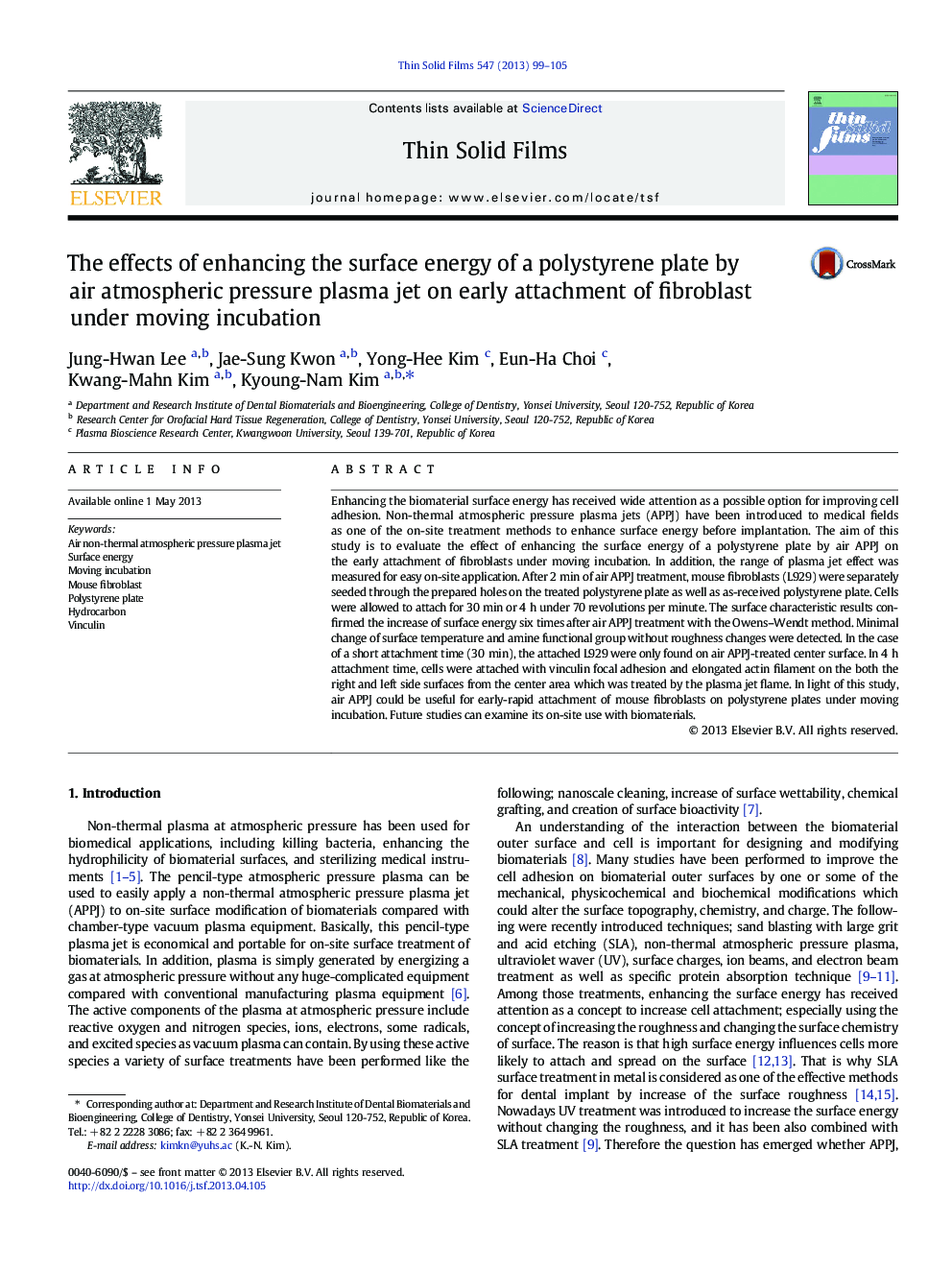| Article ID | Journal | Published Year | Pages | File Type |
|---|---|---|---|---|
| 1665897 | Thin Solid Films | 2013 | 7 Pages |
•Air atmospheric pressure plasma jet (APPJ) increased surface energy on polystyrene.•APPJ increased mouse fibroblast early attachment under moving condition.•The effect range of APPJ was calculated as 14.5 mm from the treated spot.
Enhancing the biomaterial surface energy has received wide attention as a possible option for improving cell adhesion. Non-thermal atmospheric pressure plasma jets (APPJ) have been introduced to medical fields as one of the on-site treatment methods to enhance surface energy before implantation. The aim of this study is to evaluate the effect of enhancing the surface energy of a polystyrene plate by air APPJ on the early attachment of fibroblasts under moving incubation. In addition, the range of plasma jet effect was measured for easy on-site application. After 2 min of air APPJ treatment, mouse fibroblasts (L929) were separately seeded through the prepared holes on the treated polystyrene plate as well as as-received polystyrene plate. Cells were allowed to attach for 30 min or 4 h under 70 revolutions per minute. The surface characteristic results confirmed the increase of surface energy six times after air APPJ treatment with the Owens–Wendt method. Minimal change of surface temperature and amine functional group without roughness changes were detected. In the case of a short attachment time (30 min), the attached L929 were only found on air APPJ-treated center surface. In 4 h attachment time, cells were attached with vinculin focal adhesion and elongated actin filament on the both the right and left side surfaces from the center area which was treated by the plasma jet flame. In light of this study, air APPJ could be useful for early-rapid attachment of mouse fibroblasts on polystyrene plates under moving incubation. Future studies can examine its on-site use with biomaterials.
